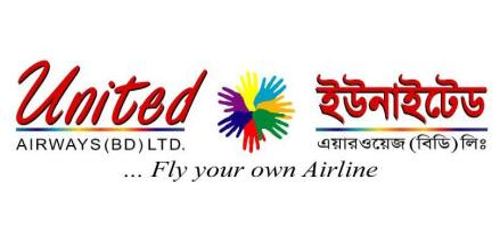Small Enterprise Financing of ULC
United Leasing Company (ULC) Ltd., a financial Institution, has a strong position in the financial sector of Bangladesh in terms of product innovation and services provided. Development in the SME Financing field has forced the top echelon of ULC management to think away from traditional financial products and concentrate more in the SME Financing products. Looking at the prospect of SME Financing, ULC established a separate SME department at the end of 2005. Before the formation of this department, there was no special attention given to SME Financing. ULC defines small and medium enterprise to differentiate each of them.
Small enterprises are those enterprises which are not public and they must fulfill following criteria:
No. | Nature of Business | Asset in BDT(without land & building) | Employee ( maximum) |
1 | Service | 50,000-50,00,000 | 25 |
2 | Trading | 50,000-50,00,000 | 25 |
3 | Manufacturing | 50,000-150,00,000 | 50 |
Medium enterprises are those enterprises which are not public and they must fulfill following criteria:
No. | Nature of Business | Asset in BDT(without land & building) | Employee ( maximum) |
1 | Service | 50,00,000-10,00,00,000 | 50 |
2 | Trading | 50,00,000-10,00,00,000 | 50 |
3 | Manufacturing | 150,00,000-20,00,00,000 | 150 |
Above market scenario clearly depicts the fact that there are abundance scope for ULC to develop in this sector. Current market position and business strategy recognizes ULC as one of the major market player and competitor in following areas:
- ULC’s business strategy is to cover the entire nation. At present out of 64 districts ULC financed around 35 districts. ULC focuses mainly on rural and semi urban areas particularly on small segment of manufacturing, trading and service sector industries.
- ULC financed their client through traditional lease method which constitutes majority of the portfolio. Financing Small client through lease method is still not honored by the banking sector. Besides ULC developed different term loan product scheme in line with bank and other FIs to support working capital requirement of the client.
- ULC developed a nation wide territory network for its small enterprise operation. As part of that, ULC opened branches across the country. New branches in Noakhali and Barisal have started operation recently. These branches are located in different business hub to cover the whole country.
- ULC has developed a fully separate credit team independently review all loan proposals of small enterprise across the country. Credit visits all new clients and provides feedback to management & relationship manager (RM). In ULC credit prepares all proposals on behalf of RM and submits before the management for approval.
Products of SEF: At A Glance
| Product Name | Nokshi | Mousumee |
| Focus Group | Woman Entrepreneurs | SME |
| Loan Amount(up to) | TK 5 lacs | TK 5 lacs |
| Repayment Term | 24 months | 18 months |
| Repayment Method | EMI | Can be structured |
| Age Limit | 25-55 years | 30-55 years |
| Applicnt’s Income (min) | Taka 3.50 lacs | Taka 2.50 lacs |
| Product Name | Agrani | Briddhi |
| Focus Group | SME | SME |
| Loan Amount(up to) | TK 6 lacs | TK 12 lacs |
| Repayment Term | 18-24 months | 18-24 months |
| Repayment Method | EMI | EMI |
| Age Limit | 30-55 years | 30-55 years |
| Applicnt’s Income (min) | Taka 2.50 lacs | Taka 2.50 lacs |
| Product Name | Bunon | Chaka |
| Focus Group | Woman Entrepreneurs | Woman Entrepreneurs |
| Loan Tenor | 12-36 months | 3 months |
| Repayment Method | EMI | Quarterly interest payment |
| Product Name | Sristi | Dhara |
| Focus Group | Woman Entrepreneurs | Woman Entrepreneurs |
| Loan Tenor | 12-36 months | 12-48 months |
| Repayment Method | EMI | EMI |
Credit Department of Small Enterprise Financing
Objectives of Credit Department (SEF) is to ensure effective credit principles are in place and exercised while maintaining best credit approval processing time for all small enterprise clients at the time of credit origination so that risks are acknowledged and mitigated to minimize credit losses and collection costs. Responsibilities of Credit Department (SEF) are:
- Visit all prospective clients before preparing the credit appraisal report.
- Prepare credit appraisal report of all proposals of Small Enterprise (SE).
- Verify whether the client’s finance requirement is justified.
- Verify whether client has the repayment capability.
- Verify whether the client meets all credit criteria of ULC.
Credit Approval Process of Small Enterprise Financing
Preparing & Approving CIR (Client Inspection Report)
This is the first step of credit approval process. The relationship manager (RM) completes a client inspection report (CIR) for a prospective client. To prepare CIR required documents are following:
- Application for proposal and quotation
- Memorandum and articles of association of the applicant/ partnership deed and board resolution.
- Copy of trade license
- National ID photocopy/ Passport photocopy.
- Copy of TIN (Tax Identification Number)certificate
- Bio-data and photograph of directors
- Net worth statement of the guarantors
- Bank statement for 1(one) year.
- Accounts for last 3 (three) years.
- Company profile.
- Sanction letters of others loan.
- Corporate guaranty.
After preparing, RM uploads that CIR in the National Foot Print (NFP), database of ULC. After reviewing that report, head of Small Enterprise Financing (SEF) accepts or rejects that proposal.
Collecting CIB (Credit Information Bureau) Report
In order to strengthen credit discipline and improve the recovery position of loans and advances, a financial institution needs to have strong control on the overall operation of credit. Like others, all types of leases and loans of ULC falls into following four scales as prescribed by Bangladesh Bank:
Unclassified: Repayment is regular. This includes standard and special mention account (SMA).
- Standard: Duration of due is 1-89 days or three months.
- Special Mention Account: Duration of due is 90-179 days or three to six months.
Classified:
- Substandard: If it is a continuous or demand loan, and if it is irregular for more than 6 months but less than 9 months then it will be classified as substandard. If it is a term loan, and if it is irregular for more than 6 months but less than 12 months then it will be classified as substandard. But if the loan is a short term agriculture loan and micro credit and if it is irregular for more than 12 moths then it will be classified as substandard.
- Doubtful: If it is a continuous or demand loan, if it is irregular for more than 9 months but less than 12 months then it will be classified as doubtful. If it is a term loan, and if it is irregular for more than 12 months but less than 18 months then it will be classified as doubtful. But if the loan is a short term agricultural loan and micro credit and if it is irregular for more than 36 months then it will be classified as doubtful.
- Bad & Loss: If it is a continuous or demand loan and if it is irregular for more than 12 months then it will be classified as bad & loss. If it is a term loan and if it is irregular for more than 24 months then it will be classified as bad & loss. But if the loan is a short term agricultural loan or micro credit and if it is irregular for more than 60 months then it will be classified as bad & loss.
If the CIB report is mentioned as classified (substandard, doubtful or bad & loss) by Bangladesh Bank, the client will not be financed.
Receiving CIR & Credit Visit Request
After the acceptance of CIR by head of SEF, RM sends a mail request for credit visit to Credit department. Credit department receives an automatic Generated mail in case of every accepted CIR. After getting the mail, credit person review that report. There are two parts in a CIR. One part contains general information about the client and the business. Another part contains three years accounts of the client. In case of existing clients, credit person checks the present condition of payment behavior of that client and find out the purpose of previous finance. On the other hand, if the client is new then credit person makes a brief list of matters that must be checked to analyze the client depending on the information regarding client’s business and personal details. Client person also tries to get an overview of sales, assets, inventory etc from the provided accounts.
Credit Visit
Credit visit is an important part to accomplish the targeted task of the department. After reviewing the CIR, credit person goes to visit with a brief idea about the client and his/her business. Credit person tries to match that information and also seek for new information that can affect the finance decision. Sometimes credit visit becomes a great challenge. Suppose, a credit person got the information that the client had sales revenue of BDT 1000000 at the end of last year. So, during visit the credit person will try to get prove of the amount. But many times it was observed that there is no evidence of the amount because as a SME businessman, client did not maintain proper accounts. Credit person tries to know about the client’s background, family, reason for coming in the business, future plans for the business. He also observes the location of the business, current capacity of the picture of the business premises, factory premise, proposed machineries (if lease) etc. after the visit, credit person prepares a visit report and send to the head of credit. Head of credit discusses issues regarding the client and takes decision about the amount and tenure of the proposed finance facility. Credit visit helps the credit person to fill up the CRG (Credit Risk Grading) form.
Preparing the Appraisal
After credit visit, credit person makes the appraisal for the client. The appraisal consists of 8 different parts. The first page of the appraisal contains:
- Name of the client,
- Relationship status with ULC,
- Location of business,
- Brief history of the business,
- Proposed nature of finance (loan/lease),
- Description of proposed assets,
- Purpose of finance,
- Loan tenure,
- Interest amount,
- Mode of payment,
- Installment amount,
- Penalty interest amount and
- Proposed security description.
In the second part of the appraisal there are information about the nature of business, date of registration and commencement of the business, brief description of the main activity of the concern, information about the main sponsor (name, age , education, home district, percentage of ownership), brief history of the sponsor, successor information of the sponsor, CIB (Credit Information Bureau) status, current liability status with other financial institutions, current production capacity, major customer information, major supplier information and other business details. The CIB status is very important. Credit officer has to be sure about the current status of client in CIB. Client’s information regarding his/her loan portfolio should match with the information of CIB.
Third part of the appraisal consists of the possible effects of proposed finance amount. The effect on profit and sales generation, employment generation and environment are highlighted in this portion. Besides, the total calculation of exposure is also done in this portion of appraisal. While calculation of total exposure, the resale value of the financed asset is calculated by using a special value calculation parameter. CRG (Credit Risk Grading) form is also filled in this part. This grading form combines management risk, financial risk and industry risk. This grading model is developed by the CRA (Credit Risk Administration) department.
The fourth part of the appraisal represents important components of the accounts of client. This part is a brief scenario of three years accounts of the client. Different financial analyses (ratio analysis) are done in the next part of appraisal based upon the data of accounts. These ratios include current ratio, quick ratio, profit margin, return on asset, return on equity, average collection period, average payment period and inventory turnover, average cash conversion cycle and DSCR (Debt Service Coverage Ratio). Another two parts of the appraisal contain description of associated companies or business entities of the concern (if any) and present liability status of those bodies with any financial institution. Last part of the appraisal shows cash flow of the business.
Appraisal Review & Approval of Proposal
The appraisal is reviewed by head of credit department. Then it goes to DMD (Deputy Managing Director) for another review. At the end MD (Managing Director) gives the final approval. But MD has an authority to approve proposal limited to BDT 30 lac for existing clients and BDT 25 lac for new clients. Proposals of over this amount go to executive committee meeting with recommendation from MD and DMD. DMD has an authority to approve up to BDT 20 lac for only existing clients.
So all proposals are approved as per following approval limits:
Requires Approval by DMD | Requires Approval by MD | Requires Approval by EC | |
| New clients | – | 2.5 million taka | Above 2.5 million taka |
| Existing clients | 2.0 million taka | 3.0 million taka | Above 3.0 million taka |
The Board of Directors comprising the Managing Director and three other directors nominated by the Board appoints the Executive Committee (EC). The Committee is authorized to approve all financing proposals with the recommendation of DMD and MD above the limit of their signing authority.
Credit Approving Authority: At A Glance
| Branch Manager ↓ Head of SEF ↓ Credit Department ↓ Reviewed by Head of SEF ↓ DMD for Review ↓ MD
Or Executive Committee
|
Branch-based Duration of the Credit Approval Process
The average duration of the process is shown graphically to better understand the problem in a quick view. This task has been done in four different pie charts:
| DHAKA BRANCH | |
Average Duration (Day) | |
| CIR Preparation to CIB Collection 29(Max)* | 29 |
| CIR Preparation to CIR Approved 20 | |
| CIR Approved to Credit Visit Request | 04 |
| Credit Visit Request to Credit Visit | 13 |
| Credit Visit to Credit Feedback | 06 |
| Credit Feedback to Appraisal Review | 03 |
| Appraisal Review to Approval | 06 |
| TOTAL | 61 |
| JESSORE BRANCH | |
Average Duration (Day) | |
| CIR Preparation to CIB Collection 16(Max)* | 16 |
| CIR Preparation to CIR Approved 07 | |
| CIR Approved to Credit Visit Request | 00 |
| Credit Visit Request to Credit Visit | 13 |
| Credit Visit to Credit Feedback | 06 |
| Credit Feedback to Appraisal Review | 08 |
| Appraisal Review to Approval | 04 |
| TOTAL | 47 |
| BOGRA BRANCH | |
Average Duration (Day) | |
| CIR Preparation to CIB Collection 25(Max)* | 25 |
| CIR Preparation to CIR Approved 08 | |
| CIR Approved to Credit Visit Request | 00 |
| Credit Visit Request to Credit Visit | 15 |
| Credit Visit to Credit Feedback | 08 |
| Credit Feedback to Appraisal Review | 05 |
| Appraisal Review to Approval | 02 |
| TOTAL | 55 |
| OTHER BRANCHES | |
Average Duration (Day) | |
| CIR Preparation to CIB Collection 23(Max)* | 23 |
| CIR Preparation to CIR Approved 19 | |
| CIR Approved to Credit Visit Request | 02 |
| Credit Visit Request to Credit Visit | 09 |
| Credit Visit to Credit Feedback | 07 |
| Credit Feedback to Appraisal Review | 06 |
| Appraisal Review to Approval | 02 |
| TOTAL | 49 |
* As CIB Collection and CIR Approval both are connected to CIR Preparation date, the maximum duration is counted among these two rather counting both of them.
Average GAP (1-7) in Approval Process: A Brief Overview
Branch | No of Clients | GAP 1 | GAP 2 | GAP 3 | GAP 4 | GAP 5 | GAP 6 | GAP 7 |
Dhaka | 22 | 29 | 20 | 4 | 13 | 7 | 3 | 6 |
Jessore | 19 | 16 | 7 | 0 | 13 | 6 | 8 | 4 |
Bogra | 8 | 25 | 8 | 0 | 15 | 8 | 5 | 2 |
Other | 16 | 23 | 19 | 2 | 9 | 7 | 6 | 2 |
Note:
GAP-1: CIR Preparation to CIB Collection
GAP-2: CIR Preparation to CIR Approved
GAP-3: CIR Approved to Credit Visit Request
GAP-4: Credit Visit Request to Credit Visit
GAP-5: Credit Visit to Credit Feedback
GAP-6: Credit Feedback to Appraisal Review
GAP-7: Appraisal Review to Approval
Causes of GAP & Weakness of the Process
It is very much apparent that the main weakness of credit approval process is consumption of time as the process is working in a so-called step by step manner. As mentioned earlier I took 65 appraisals (from January to March) as sample and calculated the branch-wise average lead time for the whole approval process. The main reasons of GAP in different steps of the process are described below:
GAP-1: CIR Preparation to CIB Collection
- After filling up of CIB form, it is sent to Bangladesh Bank. But at an average it has taken 20 days or more to return back. Without a positive CIB report CIR can not be approved. For this reason the rest of the process being stopped.
GAP-2: CIR Preparation to CIR Approved
- It takes a long time to collect all the required documents from prospective clients. This is because most of the cases entrepreneurs of small enterprise can not keep accounts like medium or corporate entrepreneurs. So it takes comparatively longer period to upload CIR on National Foot Print (NFP).
- Sometimes recording error by relationship manger may happen. As a result the input will provide wrong CIR preparation date.
- Besides these reasons in some particular cases negligence or carelessness of relationship manager lengthens the duration.
GAP-3: CIR Approved to Credit Visit Request
- The main reason of this type of delay is the convenience of prospective clients. Because after the approval of CIR, relationship manager communicates with client for fixing the probable date of credit visit. Without client’s consent or convenience, credit visit request can not be done.
GAP-4: Credit Visit Request to Credit Visit
- Right now ULC has a central credit department only for small enterprise at main branch to cover all the territories. But ULC has recently commenced its operation on Noakhali and Barisal. This company has further plan of expansion. But with this limited human resource on a central basis, it is more than difficult to meet the credit visit request from all territories on time.
- Besides this reason, sometimes credit visit request is done before CIB collection or approval of CIR. In that case credit department faces some problems to meet up those requests. As a result unexpected delay has been occurred.
GAP-5: Credit Visit to Credit Feedback
- Right now ULC has a central credit department only for small enterprise at main branch to cover all the territories. But ULC has recently commenced its operation on Noakhali and Barisal. This company has further plan of expansion. But with this limited human resource on a central basis, it is more than difficult to meet the pressure from all territories and provide credit feedback on time.
- Credit officer has to check and match all the related documents. Mistakes and mismatches in various documents are very common. So credit officer has to communicate with the relationship manager regarding those issues and can not forward the appraisal for approval before all discrepancies solved.
- Besides these reasons, sometimes credit officer requires some documents to relationship manger as he knows that relationship manager takes some days to collect those necessary but not essential documents. By following this strategy credit officer tries to meet the pressure from all the territories. But for that reason unnecessary delay has been occurred on a regular basis which creates negative impact on the image of ULC.
GAP-6: Credit Feedback to Appraisal Review &
GAP-7: Appraisal Review to Approval
- In most of the cases the delay occurred due to finance amount. When the appraisal is reviewed by DMD, the finance amount decides on the basis of appraisal or credit feedback provided by credit department. After the review this decision is communicated with the client. So it takes some duration.
- Besides this reason sometimes CIB can be pending or CIR can not be uploaded by relationship manager. Sometimes the essential documents are on the process of collection even after appraisal review. So in these situations approval can not be done and being delayed.
Recommendation
Since the banking and non-banking financial institutions are doing a good business, so it is clear that the modern people are more concerned about securing their valuable assets and get high-quality and timely services. For this reason these organizations have made this sector very competitive. So, financial institutions have to organize their operation and do their operations according to the need of the market. This sector no more depends on the traditional method. In this competitive world this sector has trenched its wings wide enough to cover any kind of financial services anywhere in this world. To improve the existing process, United Leasing Company should adopt some of the practices that are not practiced currently. This are-
- ULC should strictly follow the credit operation manual so that no confusion arises in the credit officials or no wrong doing occurs at the time of lending procedure.
- Filing procedure of ULC should be maintained in a definite and clear manner.
- An uninterrupted network system should be ensured. It will save the officials from much hassle and will save time.
- The credit sanction procedure should be made quicker since competition is very hard in today’s business world. Clients do not want to wait for three to four weeks on an average to get a loan which is even protected by security.
- Decision making process should be made more decentralized. Participative approach should be adopted to gain prompt and effective result.
- For the smooth credit operation existing employees should be trained properly to carry out this job more efficiently. Besides, some experienced and skilled people can be recruited.
- Lead time for an approval should be minimized to 7-10 days to compete in the market. This can be ensured by establishing a standard timeline for the approval process.
Conclusion
The financial environment has become hyper competitive as the number of non banking financial institutions are increasing. One of the important features of NBFIs is Lease financing. The Lease financing practices in Bangladesh have grown significantly within the last 10 years. Competition among the leasing companies has grown stronger with the growth of the NBFIs, besides entrance of commercial banks in the lease financing market who have the advantage of lower costs of fund compared to the NBFIs. The study found that the performance of United Leasing Company is satisfactory and it is trying to grow with the competition and find the ways to serve customers more creatively. But, in order to maintain and attract more depositors and borrowers ULC should improve their strategy and service quality; it should also concentrate in minimizing the approval process time which in turn will give more quick service to its clients. The market still offers huge opportunities for the leasing business. Those NBFIs that could set its objectives in order to gain access to the opportunities by using its vision and could gather the necessary talents and back-up resources might be able to survive and will becoming the best operator in the market. So, we hope that United Leasing Company will be the one of them.
Bibliography
- www.ulc.com
- www.bangladesh-bank.org
- Annual Report 2009 of United Leasing Company.
- Brochures of United Leasing Company.
- National Foot Print (official database of ULC).
- Bangladesh Economic Review 2010.
- Ahmed, M. U. (2001), “Globalization and Competitiveness of Bangladesh’s Small scale
Industries (SSIs): An Analysis of the Prospects and Challenges.”
- Ahmed, M. U. (1999), “Development of Small-scale Industries in Bangladesh in the New
Millennium: Challenges and Opportunities,” Asian Affairs, 21(1), January-March.
- BBS (Bangladesh Bureau of Statistics) (2009), Report of the Census of Manufacturing
Industries (Dhaka: BBS).
- Bakht, Z. (1988), “Jobs Opportunities and Business Support (JOBS) Programme: Growth potentials of Small and Medium Enterprises: A Review of Eight Sub-Sectors in Bangladesh,” (Dhaka: Bangladesh Institute of Development Studies; mimeographed; JOBS Sub-sector Study).
- Prospects and Challenges,” in R. Sobhan et al. (eds.), Bangladesh Facing the Challenges of Globalization, (Dhaka: Centre for Policy Dialogue & University Press Ltd.).
















